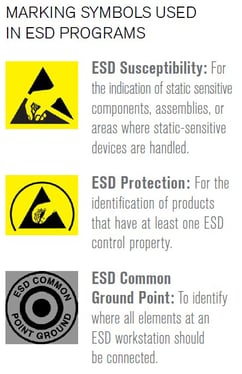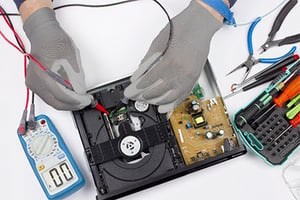- HOME
- PRODUCTS
- Arm Protection (119)
- Cold Stress (1)
- Critical Environment (170)
- Electrical Safety (133)
- Emergency Responder (37)
- Ergonomics (12)
- Eye Protection (356)
- First Aid (17)
- Hand Protection (1447)
- Head Protection (103)
- Hearing Protection (49)
- Heat Stress (37)
- Protective Clothing (454)
- Respiratory Safety (44)
- Warning Beacons (28)
- BRANDS
- CHANNELS
- Sales Tools
- NEWS, ARTICLES & EVENTS
- Log in or Sign Up
- PRODUCTS
- /// Hand Protection
- /// Hand Protection
- Chemical Resistant Gloves
- Cold Protection Gloves
- Cut Resistant Gloves
- Disposable Gloves
- Fabric Work Gloves
- General Purpose Gloves - Coated
- General Purpose Gloves - Uncoated
- Heat Protection Gloves
- High Performance Gloves
- Leather Drivers Gloves
- Leather Palm Gloves
- Parade & Uniform Gloves
- /// Head Protection
- /// Eye Protection
- /// Hearing Protection
- /// Respiratory Safety
- /// Protective Clothing
- /// Arm Protection
- /// Heat Stress
- /// Warning Beacons
- /// Cold Stress
- /// Ergonomics
- /// First Aid
- /// Welding Protection
- /// Controlled Environment
- /// Electrical Safety
- /// Emergency Responder
- /// Hand Protection
- BRANDS
- CHANNELS
- SALES TOOLS
Unraveling the Dynamics of ESD Safety

When it comes to Electrostatic Discharge (ESD) Safety, it’s all about control – static control. The ESD Association® sets many of the global standards that are considered guiding principles for static control and ESD Safety. Devising the control of electrostatic discharge within a set environment is challenging and there are key static control concepts that are essential to the design of successful ESD control programs.
 THE PRINCIPLES OF STATIC CONTROL
THE PRINCIPLES OF STATIC CONTROL
Effective ESD Safety means going on the offensive because no matter what we do, a built-up static charge will always try to find a way to discharge. That leaves two options: (1) trying to prevent or slow the build-up of static or (2) manipulating an environment so static can discharge safely. These are the steps that ESD professionals take to further develop these concepts into comprehensive ESD Control programs:Identify the areas where ESD Susceptible (ESDS) items are to be handled
Determine and define the level of control needed within that environment and label them as Electrostatic Protected Areas (EPA)
Reduce the generation of static charge by balancing the electrostatic potential of processes and materials, as well as creating grounding paths
Dissipate and neutralize electric charge through the use of static control materials
Use proper grounding and ESD Safe materials to protect products from discharge
THE ROLE OF ANSI / ESD S20.20
Over the years, the large variation in the types of ESD Controlled Environments has resulted in the development of standards, guidelines and manufacturing best practices that cover the requirements necessary to design, implement and maintain an organization’s ESD Control Program. ANSI/ESD S20.20 is a comprehensive standard that outlines tests and requirements that tailor the development of an ESD program for the protection of electrical and electronic parts, assemblies and equipment. More specifically, the standard sets out technical requirements, limits and test methods associated with grounding and bonding systems, personnel grounding and EPA ESD control items.
ESD CONTROL: ALWAYS A CHALLENGE
If we think about it, it is inherently challenging to reduce static generation within a Controlled Environment when one of the leading generators of static electricity is the workers (technicians) themselves. Every time they walk or move, they can generate static electricity. And, when they pick up an object or create contact or separation between two material surfaces, they may potentially be discharging thousands of volts of static charge from their body. So, how can an ESD safe environment be properly managed when one of the biggest hazards are the people themselves?
THE IMPORTANCE OF PERSONAL ESD PROTECTION
 Mitigating the risk that humans pose in an ESD environment is evaluated holistically in terms of the working environment. Everything from air quality, relative humidity, walls and flooring – as well as equipment and furniture are considered. Workers are expected to wear ESD safe personal protective gear which may include garments, gloves, footwear and grounding straps with static control properties to ensure the parameters set by the ESD control program are maintained. By using the correct materials to balance static potential and creating grounding paths to prevent the buildup of electric charge, the product is protected.
Mitigating the risk that humans pose in an ESD environment is evaluated holistically in terms of the working environment. Everything from air quality, relative humidity, walls and flooring – as well as equipment and furniture are considered. Workers are expected to wear ESD safe personal protective gear which may include garments, gloves, footwear and grounding straps with static control properties to ensure the parameters set by the ESD control program are maintained. By using the correct materials to balance static potential and creating grounding paths to prevent the buildup of electric charge, the product is protected.
ESD SAFE HAND PROTECTION
Gloves and finger cots with static control properties are made of (or treated with) materials that are inherently anti-static or static dissipative or blended with conductive materials. The ANSI / ESD SP15.1 is the standard of reference for In-Use Resistance Testing Of Gloves And Finger Cots. It covers multiple resistivity tests, including:
 ANSI/ESD STM11.11: Surface Resistance Measurement of Static Dissipative Planar Materials
ANSI/ESD STM11.11: Surface Resistance Measurement of Static Dissipative Planar MaterialsANSI/ESD STM 11.12: Volume Resistance Measurement of Static Dissipative Planar Materials
ANSI/ESD STM 11.13: Two-Point Resistance Measurement of Dissipative and Insulative Materials
Constant Area and Force Electrode (CAFE): Specifically designed for resistance measurements at the thumb and fingertips
The values of each of these tests are important to electrical engineers developing an ESD program, however the CAFE resistivity test is often cited on spec sheets to help compare the static dissipative characteristics of different gloves. Depending on the type of glove and environment that it must operate in, other glove standards may be applied such as testing for chemical, heat and cut resistance – as well as cleanroom level.
DEFINING RANGES OF SURFACE RESISTANCE
Often, people will characterize ESD performance as ranging from anti-static to static dissipative and conductive. The reality is that ranges are dynamic and dependent on the materials and industry. This being said, producers of ESD safe protective gear such as gloves, clothing and accessories will still outline surface resistivity ranges because it helps more easily identify products that meet the needs of specific ESD Control Programs. Below is the illustrated range PIP® has suggested for our lines of ESD safe gloves and finger cots:

CHOOSING THE RIGHT PROTECTION FOR A PROFESSIONALLY MANAGED ESD PROGRAM
It is important to remember that ESD protective products are to be considered as a part of a comprehensive ESD Control program developed and managed by an ESD program manager or coordinator. They will develop a program that specifies building, equipment and personal protective products that meet the performance criteria outlined in their program.
PIP® offers a full range of ESD gloves and finger cots. Explore PIP’s range of ESD Safe products to discover the best options to meet a customer’s professionally managed ESD Control Program.
- Precision ESD Knit Gloves for electronics manufacturing and assembly
- ESD Safety for Cleanroom that exceeds standards for the lowest levels of extractables and particulates
- ESD Safe Finger Cots for precision ESD and cleanroom applications
- Special ESD Protection for chemical and thermal applications
Reusable vs. Disposable – Using The Right Garment For The Right Job
Disposable garments or reusable garments – which choice is right for you? There has always been...The Psychology Behind Effective Food Safety Culture
What’s the first thing you think of when you see a firefighter helmet? If your answer was hero,...What is Double Hearing Protection and When Would You Need It?
You might be asking yourself if double hearing protection is something you should be considering....Proposition 65 | Privacy Policy | Contact Us | Full Site
© 2012-2026Protective Industrial Products, Inc. All rights reserved.








